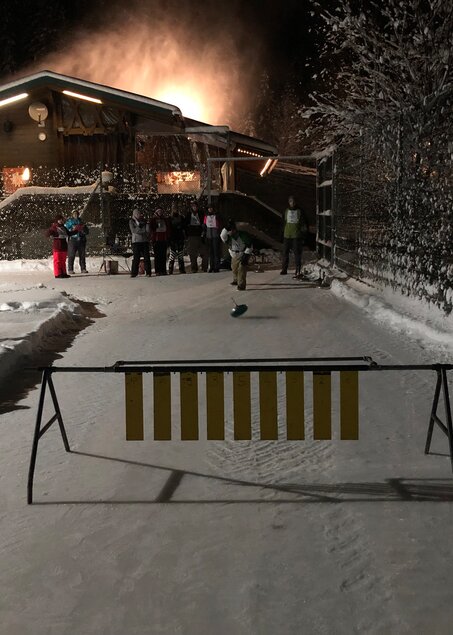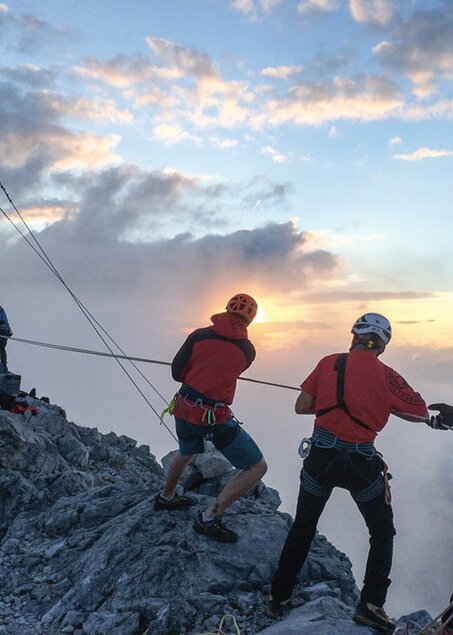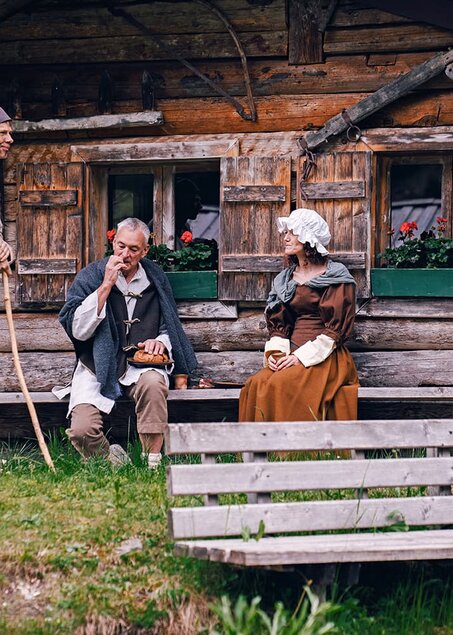
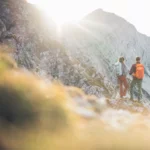
Preparations for the winter season
Social Wall
Ever wondered when the winter season for our outdoor staff actually begins? Thomas Koch from the Tiroler Zugspitz Arena explains how he and his team get the region’s hiking and cross-country trails ready for the winter.
‘By the end of summer, our minds are already on the winter season,’ says Thomas Koch on behalf of himself and his team. He’s the head of infrastructure in the Tiroler Zugspitz Arena – and therefore responsible for all the staff who work outside in the region. ‘We’re the tourist association and responsible for the hiking and cross-country trails in the Tiroler Zugspitz Arena. Our work involves maintaining the many trails, while the ski areas are looked after by the ski lift operators.’
Social Wall
But what does that actually involve? And why in late summer, not later? ‘It’s quite simple,’ says Thomas. ‘The preparations take a few months. We start by servicing our snow groomers to make sure they’re ready for the winter. Later, we level the cross-country trails and mark out the skating and classic tracks. After that, we take care of the “Moos”.’ The ‘Moos’ is the large green area between Ehrwald, Lermoos, and Biberwier. Cross-country ski trails will later run through it – and that demands some preparation, says the expert: ‘The “Moos” is criss-crossed with ditches and watercourses. If we left it as it is, cross-country skiers wouldn’t have a chance – despite the thick snow cover, they’d inevitably fall through. That’s why we build bridges to accommodate the trails. Cross-country skiers can then set off without having to worry about the quality of the track.’
But, as he adds, that’s not all the outdoor workforce has to prepare to ensure that the hiking and cross-country ski trails in the Tiroler Zugspitz Arena are ready for use as soon as winter starts. In addition to levelling the terrain, they also have to put up snow poles and signage. This is important so that people know where they are. ‘It can quickly get confusing in the winter,’ says Thomas. ‘Picture a pure white, freshly snow-covered winter landscape. Or a very foggy day. It’s so easy to get lost – even if, like us, you’re here every day and know the area like the back of your hand.’ These snow poles, then, help to make sure that no one – cross-country skiers, operating staff, outdoor staff – loses their way. They mark out the outer edge of a trail, so you’re fine as long you stay within them.
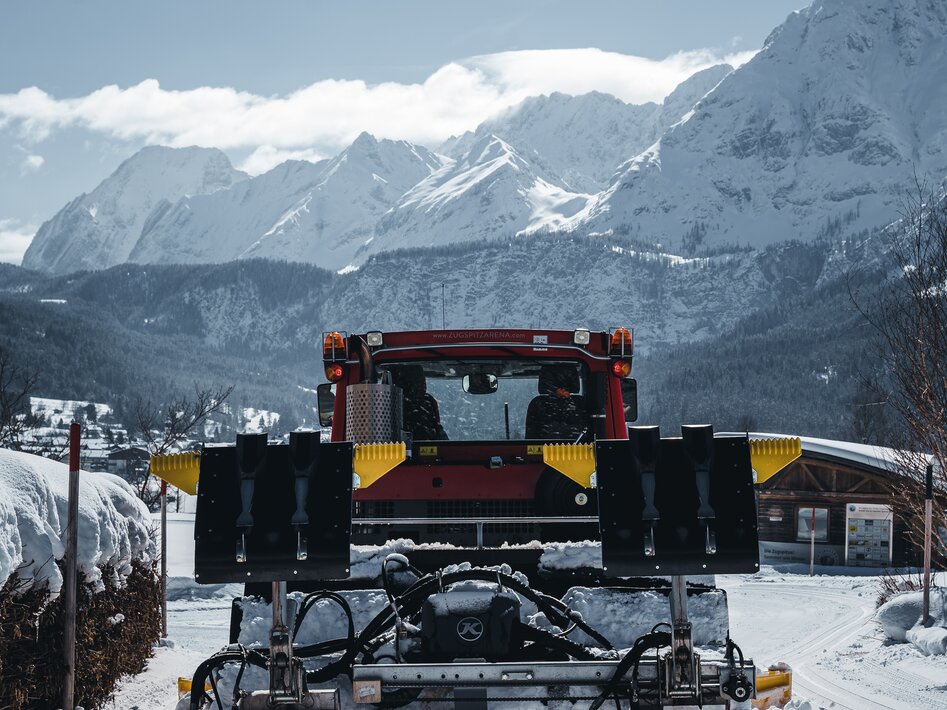
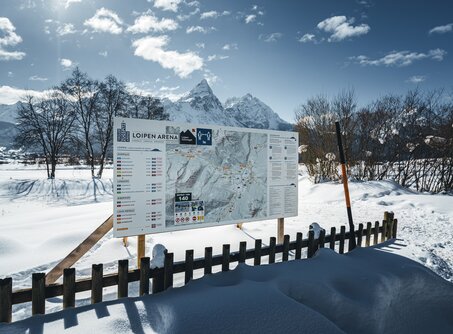
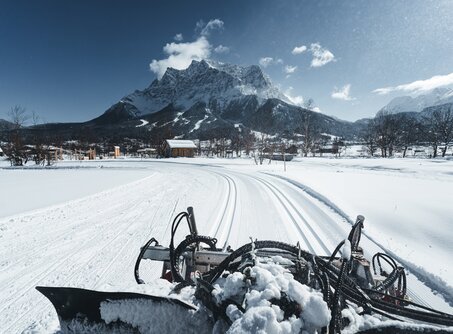
Social Wall
It’s not just the cross-country ski trails – the hiking trails in the Tiroler Zugspitz Arena are also prepared for winter. ‘When the first snow falls, we’re out there clearing and gritting them. We only do this, however, on our main winter hiking trails.’ Others, such as those that may be exposed to avalanches, are closed for the winter season. But on the safe and cleared hiking trails, you can enjoy a walk through the beautiful Tyrolean scenery without worry. Rest areas and benches are also shovelled clear to give winter hikers the opportunity to take a break. Benches, in particular, are very popular in sunny spots. And you can easily see why: who wouldn’t want to enjoy a snack with magnificent views over the snowy winter landscape while basking in the sunlight?
Social Wall
What happens, though, if, of all things, the snow refuses to fall on the hiking and cross-country trails in the Tiroler Zugspitz Arena? ‘That’s a situation we’re also prepared for,’ says Thomas. ‘We cover our golf course trail in artificial snow – making sure we always have at least one reliably snow-covered trail, no matter the weather.’ The team doesn’t actually start snow-making until just before the start of the season – then they apply the first layers of snow, which freeze through to form an ideal surface. The team actually starts making the snow a little earlier.
‘As soon as conditions are right, we produce the snow and fill up our depot. The right time to do this is related to the wet bulb temperature, which is made up of air humidity, air temperature, and water temperature. Once the figures are right, usually the case at around minus two degrees, we start.’ Of the approximately 8,000 cubic metres of snow that the depot can hold, a number of loads are then taken to the golf course trail and piled up there. The snow gun takes care of the rest – fully automatically. ‘This way, we always have a white covering in the “Moos,” even in years with little natural snowfall, which are becoming more common,’ says Thomas.
The winter season in the Tiroler Zugspitz Arena began on 14 December 2021. Go to the tourist association website to find the latest information relating to the coronavirus pandemic.
Social Wall
Geteilte Urlaubsfreude ist doppelte Urlaubsfreude! Unsere Social Wall ist ideal zum Austausch von unvergesslichen Erlebnissen und für ganz persönliche Einblicke in die Tiroler Zugspitz Arena.
Categories
You may also be interested in ...
Geteilte Urlaubsfreude ist doppelte Urlaubsfreude! Unsere Social Wall ist ideal zum Austausch von unvergesslichen Erlebnissen und für ganz persönliche Einblicke in die Tiroler Zugspitz Arena.
